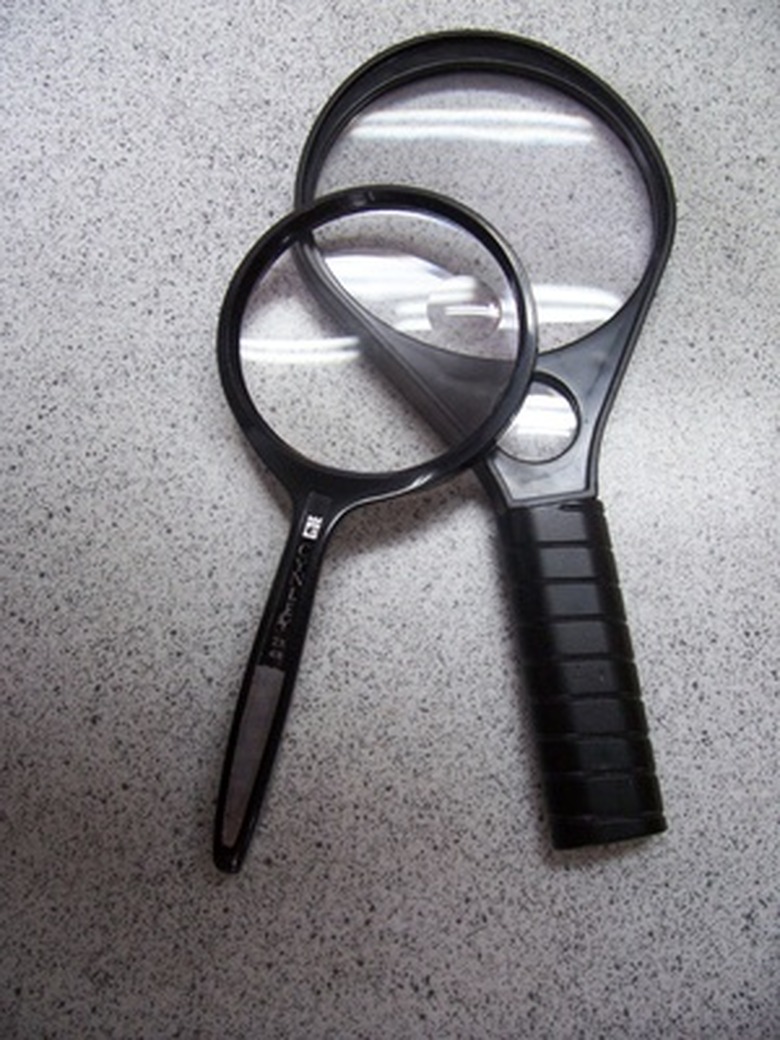How Does Water Magnify Things?
Behavior of Light
Light rays travel in straight lines. When they strike an opaque surface, the rays bounce, and light is reflected back to your eye so that you see an image. When light strikes a transparent object, some of the light passes through. If that light strikes the object straight on, it continues to travel in a straight line. If the light enters the transparent object at an angle, though, it changes direction, bending.
Light Refraction
Light Refraction
This bending of light is called refraction. Refraction occurs because light entering an object slows down. When it enters at an angle, one side of the light ray enters before the other, slowing down first. You can imagine this by picturing a speeding car that suddenly has the brakes applied to one side only–the car would spin in the direction of the side that suddenly slows down.
Light in Water
Light in Water
Looking from above, an object under water appears larger than it does in air. It's not that the image the light gave our eyes is bigger. It's that the image is actually closer to our eyes, since the light is not passing straight down, but is instead bending relative to the water's surface. Light passing straight down would be perpendicular to the water's surface, like the vertical line on the letter T. A closer image looks bigger–the underwater object is magnified.
Cite This Article
MLA
Johnson, Sophie. "How Does Water Magnify Things?" sciencing.com, https://www.sciencing.com/water-magnify-things-4925557/. 24 April 2017.
APA
Johnson, Sophie. (2017, April 24). How Does Water Magnify Things?. sciencing.com. Retrieved from https://www.sciencing.com/water-magnify-things-4925557/
Chicago
Johnson, Sophie. How Does Water Magnify Things? last modified March 24, 2022. https://www.sciencing.com/water-magnify-things-4925557/
